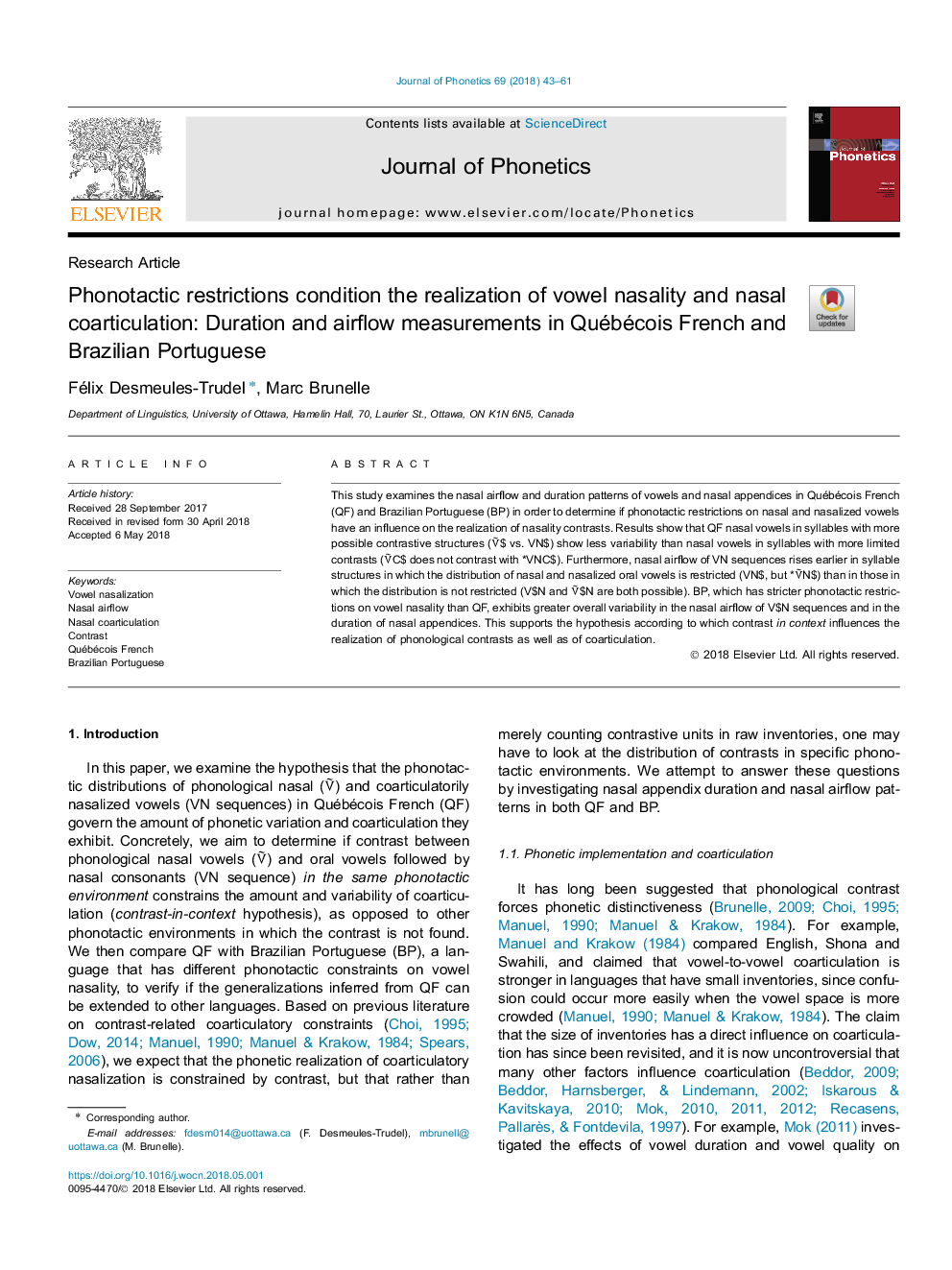| Article ID | Journal | Published Year | Pages | File Type |
|---|---|---|---|---|
| 7532711 | Journal of Phonetics | 2018 | 19 Pages |
Abstract
This study examines the nasal airflow and duration patterns of vowels and nasal appendices in Québécois French (QF) and Brazilian Portuguese (BP) in order to determine if phonotactic restrictions on nasal and nasalized vowels have an influence on the realization of nasality contrasts. Results show that QF nasal vowels in syllables with more possible contrastive structures (á¹¼$ vs. VN$) show less variability than nasal vowels in syllables with more limited contrasts (á¹¼C$ does not contrast with *VNC$). Furthermore, nasal airflow of VN sequences rises earlier in syllable structures in which the distribution of nasal and nasalized oral vowels is restricted (VN$, but *á¹¼N$) than in those in which the distribution is not restricted (V$N and á¹¼$N are both possible). BP, which has stricter phonotactic restrictions on vowel nasality than QF, exhibits greater overall variability in the nasal airflow of V$N sequences and in the duration of nasal appendices. This supports the hypothesis according to which contrast in context influences the realization of phonological contrasts as well as of coarticulation.
Related Topics
Social Sciences and Humanities
Arts and Humanities
Language and Linguistics
Authors
Félix Desmeules-Trudel, Marc Brunelle,
